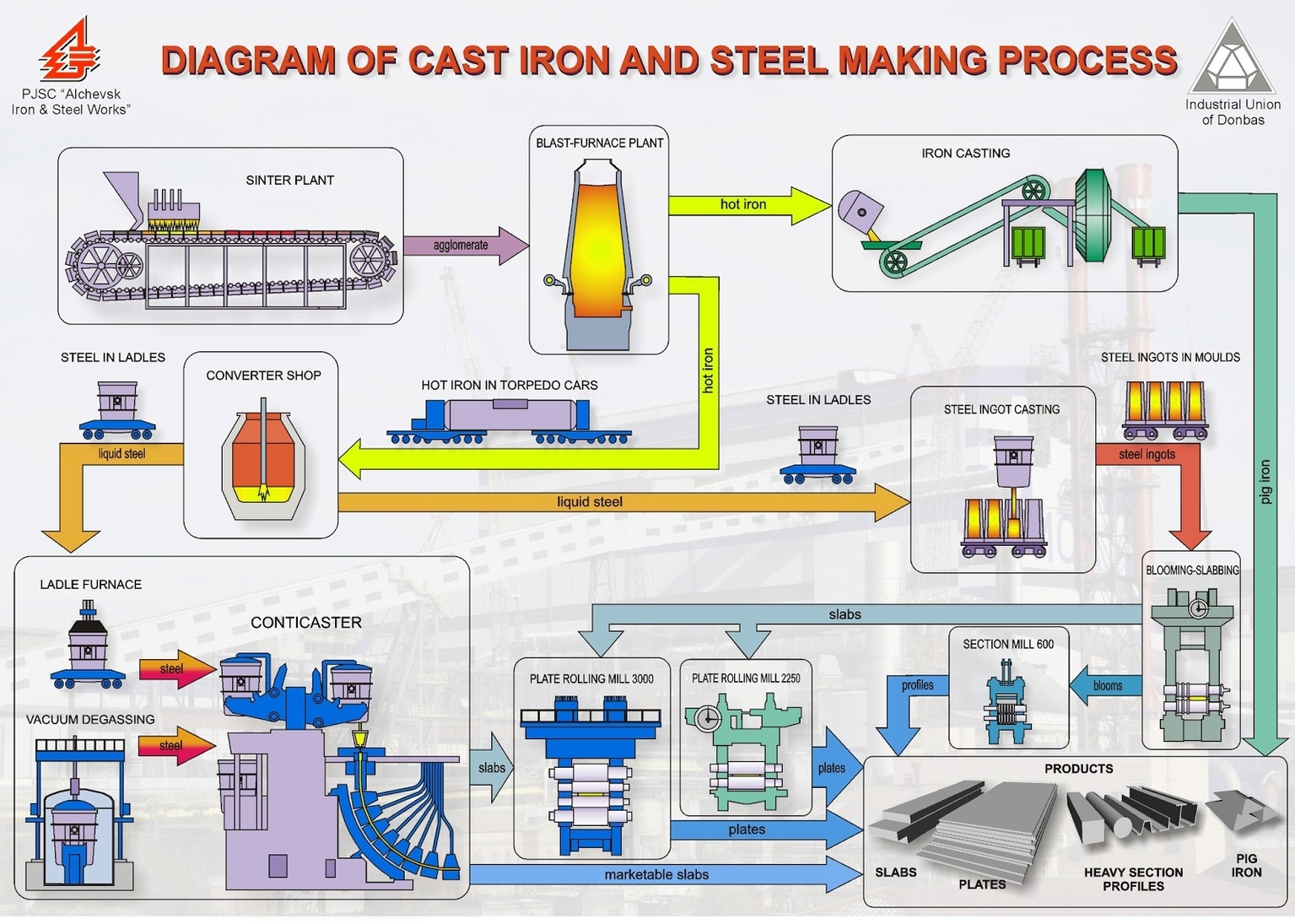
Steel manufacturing is the process of producing steel from iron ore and/or scrap. The process involves removing impurities such as nitrogen, silicon, phosphorus, sulfur and excess carbon from the sourced iron, and adding alloying elements such as manganese, nickel, chromium, carbon and vanadium to produce different grades of steel . There are two major commercial processes for making steel: basic oxygen steelmaking and electric arc furnace (EAF) steelmaking . In basic oxygen steelmaking, liquid pig-iron from the blast furnace and scrap steel are used as the main feed materials, while in EAF steelmaking, scrap steel or direct reduced iron (DRI) are used as the main feed materials . The primary steelmaking step involves smelting iron into steel, while secondary steelmaking involves adding or removing other elements such as alloying agents and dissolved gases . Tertiary steelmaking involves casting into sheets, rolls or other forms .
The history of steelmaking dates back to ancient times, with early processes of steel making being made during the classical era in Ancient Egypt, Ancient China, India, and Rome . Steelmaking has played a crucial role in the development of ancient, medieval, and modern technological societies . The earliest means of producing steel was in a bloomery, while early modern methods of producing steel were often labor-intensive and highly skilled arts . Today, steelmaking is one of the most carbon emission intensive industries in the world, responsible for about 10% of greenhouse gas emissions . To mitigate global warming, the industry will need to find significant reductions in emissions . In 2020, McKinsey identified a number of technologies that could potentially offer some emission reductions, including carbon capture and reuse during manufacturing, and switching to solar and wind energy to either power electric arc furnaces, or produce hydrogen as a cleaner fuel .
